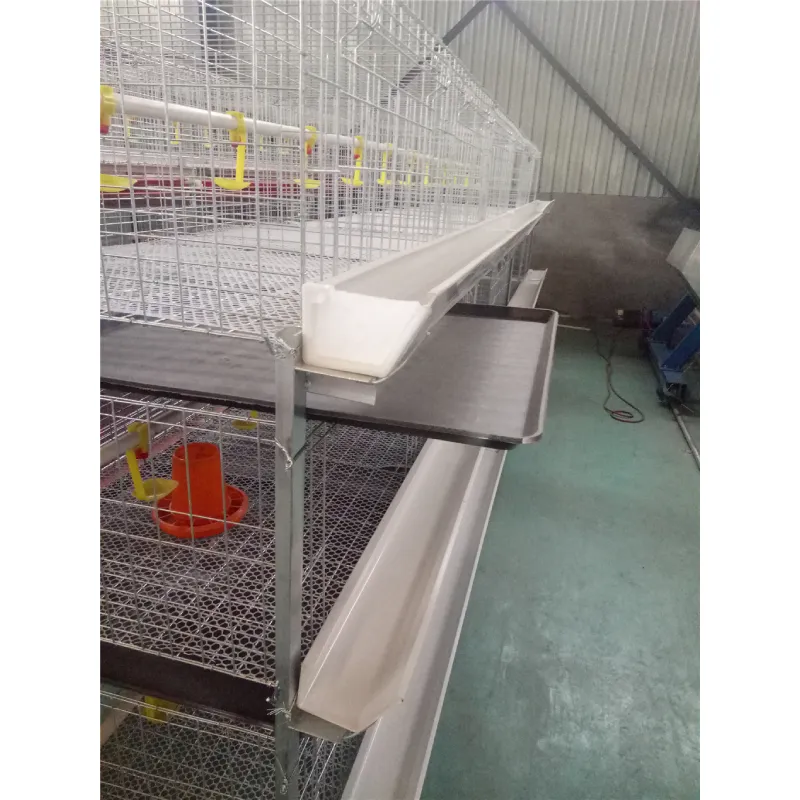Optimal Housing Solutions for Enhancing the Productivity of Egg-Laying Chickens in Cage Systems
Aug . 07, 2024 03:15 Back to list
Optimal Housing Solutions for Enhancing the Productivity of Egg-Laying Chickens in Cage Systems
The Importance of Proper Caging for Chicken Layers
In the poultry industry, the welfare of chickens, particularly laying hens, is an essential concern. Caging systems play a significant role in the productivity and well-being of these birds. The choice of cage design influences not only the health and productivity of chicken layers but also addresses issues related to environmental sustainability and consumer preferences. This article explores the various aspects of chicken layer caging, emphasizing its importance, types, and implications.
Types of Caging Systems
There are primarily three types of caging systems used for chicken layers conventional cages, enriched cages, and free-range systems
.1. Conventional Cages Historically, conventional cages have been widely utilized due to their efficiency in housing a high number of birds in a small space. However, these cages often provide minimal space for the hens, leading to concerns about their welfare. The confined space restricts natural behaviors, such as nesting, perching, and foraging, which are crucial for the hens' psychological well-being.
2. Enriched Cages In response to animal welfare concerns, enriched cages have been developed. These systems provide hens with additional space and fixtures like perches, nesting areas, and litter for dust bathing. Enriched cages allow hens to exhibit more natural behaviors while still confining them to a manageable space for poultry farmers. Research indicates that layers in enriched environments show improved health outcomes and lower stress levels compared to those in conventional cages.
3. Free-Range Systems While free-range systems provide the most space and opportunity for natural behavior, they also require more land and management compared to caged systems. Layers are allowed to roam outdoors, which can positively impact their welfare and egg quality. However, such systems also pose challenges, including the risk of predation and disease exposure, which can affect flock health and productivity.
cage for chicken layers

Benefits of Proper Caging
Proper caging of chicken layers has numerous advantages. First and foremost, a well-designed cage system enhances the well-being of the hens. By providing an environment that allows for natural behaviors, farmers can reduce stress and aggression among the flock. This leads to better egg production rates and overall health, reducing the need for medical interventions.
Secondly, efficient caging systems can optimize space usage, which is particularly valuable in commercial settings. Layering birds in cages allows for easier monitoring and management of their health and productivity. Automated feeding and watering systems can also be seamlessly integrated into these setups, improving efficiency and reducing labor costs.
Consumer Expectations and Regulation
Today’s consumers are increasingly concerned about animal welfare, which is reflected in their purchasing choices. Many retailers and food chains are implementing policies that require the use of enriched cages or even cage-free systems. Regulations in various regions are also tightening, aiming to improve living conditions for laying hens. Consequently, farmers are compelled to modernize their caging systems to align with both consumer demands and legal requirements.
Conclusion
The caging of chicken layers is a multifaceted issue that intertwines animal welfare, productivity, and consumer preferences. As the poultry industry continues to evolve, it is vital for producers to adopt caging systems that prioritize the health and well-being of their hens. Transitioning to enriched and free-range systems not only supports ethical farming practices but also meets the growing consumer demand for humane treatment of animals. Through proper caging methods, the poultry industry can ensure a sustainable future that benefits all stakeholders involved.
-
Hot Sale 24 & 18 Door Rabbit Cages - Premium Breeding Solutions
NewsJul.25,2025
-
Automatic Feeding Line System Pan Feeder Nipple Drinker - Anping County Yize Metal Products Co., Ltd.
NewsJul.21,2025
-
Automatic Feeding Line System Pan Feeder Nipple Drinker - Anping County Yize Metal Products Co., Ltd.
NewsJul.21,2025
-
Automatic Feeding Line System - Anping Yize | Precision & Nipple
NewsJul.21,2025
-
Automatic Feeding Line System - Anping Yize | Precision & Nipple
NewsJul.21,2025
-
Automatic Feeding Line System-Anping County Yize Metal Products Co., Ltd.|Efficient Feed Distribution&Customized Animal Farming Solutions
NewsJul.21,2025






